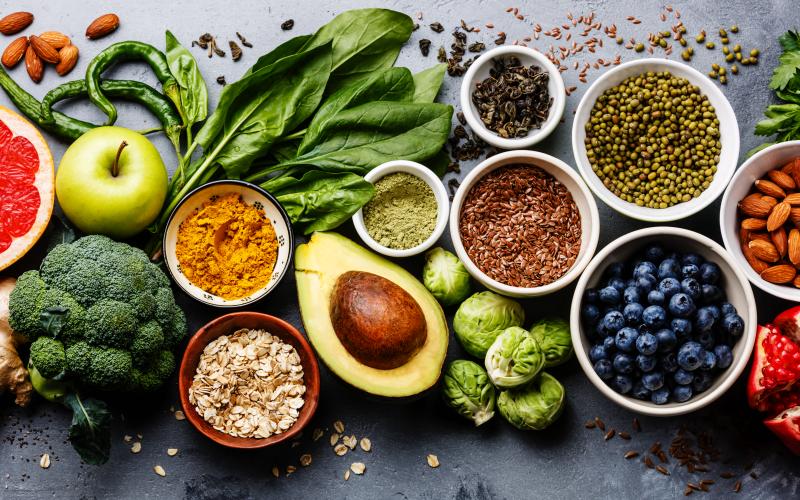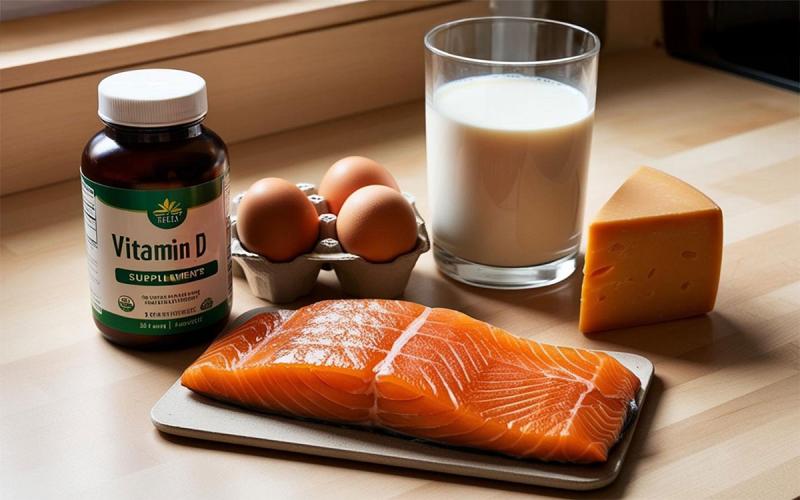
Written by Maddie Kempf under the direction and review of Claudia Botzet, former SDSU Extension Nutrition Field Specialist.
What are FODMAPs?
FODMAP stands for fermentable oligosaccharides, disaccharides, monosaccharides and polyols. FODMAPs are sugars, or carbohydrates, that are difficult to digest in the intestines.
Why are they difficult to digest?
Because they are small in length, these sugars are more likely to ferment once they reach the large intestine. When fermentation occurs, gases like methane, carbon dioxide, and hydrogen are produced1, and the surplus of gases causes severe abdominal bloating and discomfort.2 FODMAPs are known to increase osmotic pressure in the intestines, causing more water to enter into the small intestines. The additional fluids cause the intestinal walls to stretch, resulting in undesirable symptoms2, such as bloating, abdominal pain, gas, diarrhea, and constipation.
What foods contain FODMAPs?

Many foods contain FODMAPs. Let’s break them down by the acronym.
- F: ‘F’ is for fermentable, which will apply to all the foods.
- O: ‘O’ is for oligosaccharides. These include fructans and galacto-oligosaccharide, which are mainly found in wheat and rye products, legumes, nuts, artichokes, onions, and garlic.3
- D: Disaccharides (‘D’) include lactose, which is found in dairy products. Some people have to restrict their dairy intake because they do not have enough lactase production to break down lactose properly.
- M: ‘M’ is for monosaccharide. Fructose is the main monosaccharide in FODMAP. It is found in certain fruits, such as apples, pears, and mango. Fructose is also commonly extracted from natural fruits and vegetables to make high-fructose corn syrup, which is added to many sweetened, processed foods and beverages.
- A: ‘A’ stands for ‘and’ in the acronym.
- P: Polyols (‘P’) includes mannitol and sorbitol. They are found in foods, such as apples, pears, stone fruit (peaches, plums, cherries, and others), mushrooms, and cauliflower. Additional polyols, like xylitol and isomalt, along with the ones mentioned above are used as artificial sweeteners.3
What are the main uses of a Low-FODMAP diet?

A low-FODMAP diet is used to manage symptoms of irritable bowel syndrome (abbreviated as IBS) and small intestinal bacteria overgrowth (abbreviated as SIBO). Irritable bowel syndrome is a complex digestive condition, characterized by symptoms of intense abdominal pain, bloating, and gas that happen on a reoccurring basis. SIBO involves the presence of excessive bacteria in the small intestine, associated with chronic diarrhea and malabsorption. Because it involves dietary restrictions of otherwise nutritious fruits, vegetables, whole grains, and dairy, it is recommended to only follow a low-FODMAP diet for a short period of time under the direction of a physician.
The main purpose of the low-FODMAP diet is to figure out which foods are causing abdominal discomfort. Most people are not sensitive to all types of FODMAPs. The official low-FODMAP diet consists of multiple phases. In the first phase, foods high in FODMAPs are removed from your diet. This phase typically lasts around two to four weeks. Next is the reintroduction phase. This phase slowly reintroduces foods with FODMAPs to see which ones are irritating the digestive system. The third and final phase is maintenance. Throughout maintenance, foods that are irritating are limited, while continuing to consume the foods that were reintroduced without symptoms. The final phase can take as long as necessary, as you continue to determine which foods can be reintroduced without the return of undesired symptoms.
Should I try the Low-FODMAP diet?
If you have been diagnosed with IBS, SIBO, or are experiencing symptoms associated with these conditions, ask your doctor and registered dietitian nutritionist about the low-FODMAP diet. It should only be implemented under the direction of a medical professional.
References
- Science Direct. Nutrition in the management of gastrointestinal disease and disorders: the evidence for the low FODMAP diet.
- Journal of Health Study and Medicine. The Use and Efficacy of the Low FODMAP Diet in the Treatment of Gastrointestinal Diseases.
- Wiley Online Library. How to institute the low-FODMAP diet.


